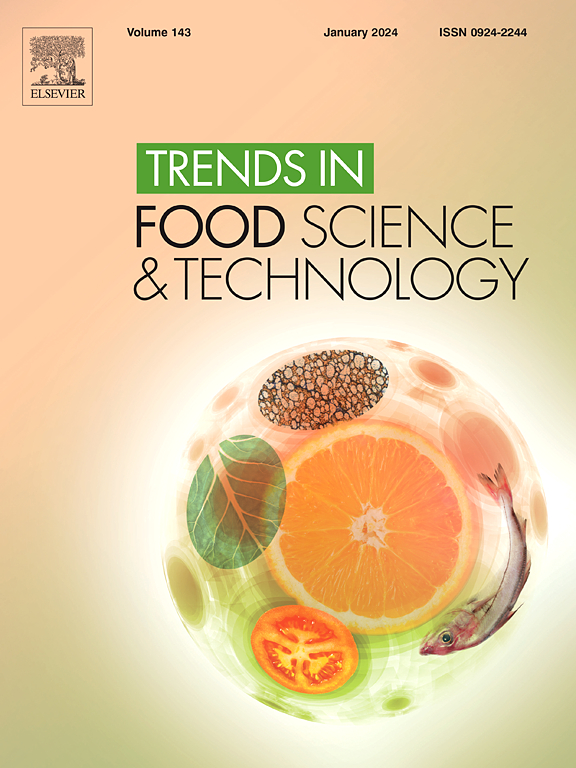The strategy to enhance the signal-to-noise ratio by “raise-high” together with “step-down”: a review on the optical rapid analysis techniques for food contaminants
IF 15.1
1区 农林科学
Q1 FOOD SCIENCE & TECHNOLOGY
引用次数: 0
Abstract
Background
Food contaminants are serious threats to food safety, so the establishment of rapid and accurate analysis methods is beneficial to safeguard human health. Optical analytical techniques have drawn considerable attention in several fields due to their various advantages, but the signal-to-noise ratio (SNR) is affected by dis-satisfactory signal value, high background interference and self-luminescence of the substrate, which significantly compromises the practical effectiveness of the detection process. Various strategies have been used to solve these problems.
Scope and approach
In this review, the strategies developing optical analytical techniques with high SNR are summarized, with sensitivity enhancement and background noise reduction. The latest advances in food contaminants detection applications are also overviewed. Emphasis was placed on the application of nanomaterials and some low background luminescence mechanisms. The current challenges and future directions of optical analysis techniques with high SNR are discussed.
Key findings and conclusions
With increasing researches on luminescence mechanism and novel materials with excellent luminescence properties, a number of optical analysis methods with high SNR able to satisfy the demand of trace detection have been proposed. Nanomaterials play an irreplaceable role in improving the SNR. The coupling of multiple excellent luminescence mechanisms has also become a powerful way to improve the sensitivity and accuracy. This will inspire more innovative research on the development of highly sensitive methods for food contaminants detection.
“升高”与“降噪”相结合提高信噪比的策略——食品污染物光学快速分析技术综述
食品污染物严重威胁食品安全,建立快速、准确的分析方法有利于保障人类健康。光学分析技术由于其各种优点在多个领域受到了广泛的关注,但其信噪比(SNR)受信号值不理想、背景干扰大、衬底自发光等因素的影响,极大地影响了检测过程的实际有效性。已经采用了各种策略来解决这些问题。本文综述了高信噪比光学分析技术在提高灵敏度和降低背景噪声方面的发展策略。综述了食品污染物检测应用的最新进展。重点介绍了纳米材料的应用和一些低背景发光机理。讨论了高信噪比光学分析技术面临的挑战和未来发展方向。随着对发光机理和具有优异发光性能的新型材料的研究不断增加,人们提出了许多高信噪比的光学分析方法来满足痕量检测的需求。纳米材料在提高信噪比方面具有不可替代的作用。多种优良发光机制的耦合也成为提高灵敏度和精度的有力途径。这将激发更多的创新研究,开发高灵敏度的食品污染物检测方法。
本文章由计算机程序翻译,如有差异,请以英文原文为准。
求助全文
约1分钟内获得全文
求助全文
来源期刊

Trends in Food Science & Technology
工程技术-食品科技
CiteScore
32.50
自引率
2.60%
发文量
322
审稿时长
37 days
期刊介绍:
Trends in Food Science & Technology is a prestigious international journal that specializes in peer-reviewed articles covering the latest advancements in technology, food science, and human nutrition. It serves as a bridge between specialized primary journals and general trade magazines, providing readable and scientifically rigorous reviews and commentaries on current research developments and their potential applications in the food industry.
Unlike traditional journals, Trends in Food Science & Technology does not publish original research papers. Instead, it focuses on critical and comprehensive reviews to offer valuable insights for professionals in the field. By bringing together cutting-edge research and industry applications, this journal plays a vital role in disseminating knowledge and facilitating advancements in the food science and technology sector.
 求助内容:
求助内容: 应助结果提醒方式:
应助结果提醒方式:


